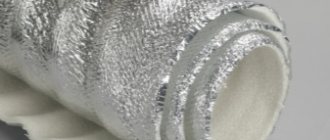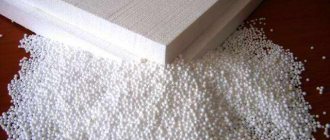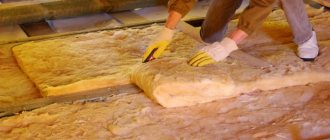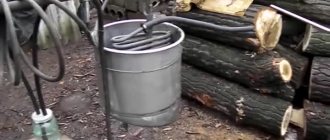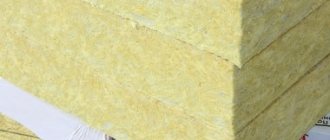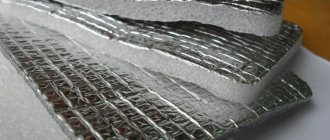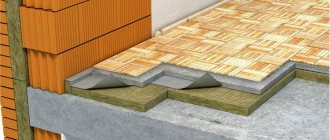Blast furnace slag is partially used as a raw material for the production of ordinary cement clinker, slag bricks, slag concrete and other materials.
The production of cement from blast furnace slag is based on the fact that in its chemical composition these slags, especially basic ones (rich in calcium oxide), are close to the composition of ordinary Portland cement. For example, the chemical composition of blast furnace slag from one of our metallurgical plants: CaO—50%, MgO—1.5%; SiO2—32%, Al2O3—13%, etc.
Granulated slag concrete: composition and proportions
Blast furnace slag is partially used as a raw material for the production of ordinary cement clinker, slag bricks, slag concrete and other materials.
The production of cement from blast furnace slag is based on the fact that in its chemical composition these slags, especially basic ones (rich in calcium oxide), are close to the composition of ordinary Portland cement . For example, the chemical composition of blast furnace slag from one of our metallurgical plants: CaO—50%, MgO—1.5%; SiO2—32%, Al2O3—13%, etc.
Chemical composition of blast furnace slag
It differs from the composition of ordinary cement in its lower content of CaO and higher content of SiO2, Al2O3 and other oxides. These oxides form chemical compounds in the slag: dicalcium silicate 2CaO • SiO2 (has astringent properties), helenite 2CaO • SiO2 • Al2O3 - an inert substance, etc. As a result of sharp cooling (granulation) of liquid blast furnace slag, granulated slag is obtained, which, in addition to the indicated compounds , included in the crystalline phase, contains aluminosilicate glass, which is chemically active.
Drum installation for semi-dry granulation of slag: 1—slag ladle; 2 — receiving bath; 3 - gutter; 4— rotating drum; 5 - granulated slag
Definition and description of slag Portland cement
The American Society for Testing and Materials (ASTM C125) defines blast furnace slag as “a non-metallic product, consisting primarily of calcium silicates and aluminates, produced together with pig iron in a blast furnace as a melt.”
When producing pig iron, the blast furnace is charged with iron ore, flux stone (limestone and/or dolomite) and coke. The products obtained at the outlet of the furnace are molten cast iron and slag. The slag consists mainly of quartz and aluminum oxides (from iron ore) and calcium and magnesium oxides (from flux stone). The slag leaves the furnace in a molten state, and the melt temperature can exceed 1480? C (2700? F). There are four main methods for processing molten slag: air cooling, cold water rapid cooling (slag swelling), crushing and grinding. Each of these processing methods produces a unique slag material with distinctive properties.
Chemical properties of slag Portland cement
The main components of blast furnace slag are quartz, oxides of aluminum, calcium and magnesium, which account for 95% of the total composition of the slag. The remaining 15% is manganese, iron and sulfur compounds and trace amounts of other elements. However, it should be noted that the main oxides included in the slag are not found in free form. In air-cooled blast furnace slag, the oxides combine to form various silicates and aluminosilicate minerals such as melilite, merwinite, wollastonite, etc., which also exist as natural rocks. In crushed and ground slag, these elements are present in the form of glass. The chemical composition of slag varies within very narrow limits, since all raw materials loaded into a blast furnace are very carefully selected and mixed.
| Typical chemical composition of blast furnace slag, % | |
| quartz(SiO2) | 32-42 |
| aluminum oxide(A12O3) | 7-16 |
| calcium oxide (CaO) | 32-45 |
| magnesium oxide (MgO) | 5-15 |
| sulfur (S)* | 1-2 |
| iron oxide (Fe203) | 1-1,5 |
| manganese oxide (MnO) | 0,2-1,0 |
*mainly in the form of calcium sulfide
Physical properties of slag Portland cement
Physical characteristics of the slag, such as weight, particle size, structural properties, etc. vary depending on the method of processing the molten slag. Accordingly, the end use of the treated slag also differs depending on the processing method.
Recently, in Russia and other countries, much attention has been paid to the problem of using secondary resources. One of the most promising areas for recycling industrial waste is its use in the production of building materials.
Metallurgy occupies one of the leading places among other industries. At the main technological stages of the production of ferrous and non-ferrous metals, by-products are formed - waste, the chemical and mineralogical composition and physical and mechanical properties of which allow them to be considered a valuable raw material for the production of building materials. The bulk of waste from metallurgical processes is formed in the form of slag.
Slags are products of high-temperature interaction between the components of source materials - fuel, ore, flux and gaseous medium. It is perhaps difficult to find another raw material that would have so many valuable qualities and at the same time make its way to widespread use in the construction industry for so long, like slag. In many areas of the country, multi-storey buildings and industrial buildings were built from slag, bridges and dams were erected, and highways were laid. From being a burdensome waste product, it is becoming a recognized raw material for the construction industry.
The earliest attempt to use blast furnace slag dates back to 1589, when cannonballs were cast from it in Germany. Slag began to be used in construction only in the 18th century. In Nizhny Tagil, slabs for steps and paving stones for roads began to be cast from slag melts. In Sweden, cast slag stones were used instead of bricks to lay the tops of blast furnace shafts. In Russia and other countries, dump slag was used as crushed stone in the construction of roads. In subsequent years, the valuable properties of slag even more attracted the attention of scientists and practitioners around the world to the problem of using slag in construction.
Receiving blast furnace slag
Blast furnace slag is obtained during the smelting of cast iron as a result of fusing clay and other impurities included in the ore and fuel with lime obtained by burning limestone introduced into the blast furnace. Depending on the composition of the charge used in the production of cast iron, basic or acidic slag is obtained. The basic slag is considered to be the composition of which, expressed as a percentage, is characterized by a basicity modulus Mo exceeding 1: Mo = CaO + MgO divided by SiO + Al2O3 > 1
Acid slag has Mo<1. The main slags are obtained, for example, when cast iron is smelted using Donetsk coke, which contains a significant amount of sulfur. When smelting with low-sulfur but higher ash Kuznetsk coke, acidic slags are obtained.
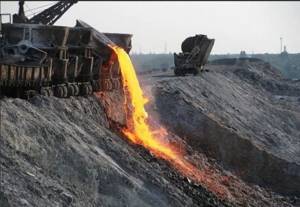
Types of slag
Metallurgical
They are divided into slags of non-ferrous and ferrous metallurgy. Ferrous metallurgy slags include:
- Blast furnace slag , obtained by smelting cast iron from iron ores. Its properties depend on the melting conditions used to produce fuel melts and flux additives.
- Steelmaking . They are produced in open-hearth, converter or electric furnace production.
- Ferroalloy . Types of ferroalloy slag are divided into subtypes with a predominance of the element that was added to the molten steel to obtain the ferroalloy, and this can be cobalt, chromium, manganese, molybdenum, silicon, etc.
Non-ferrous metallurgy slag : these include waste from copper, nickel, lead and zinc production.
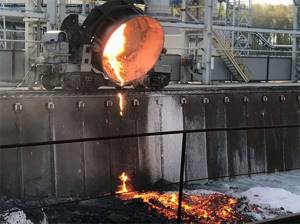
Phosphorus
They are obtained as waste from the production of phosphate fertilizers. Used in the production of pumice or mineral wool. It is added as an additive to cement only if concrete products made from such cement go through the stage of high-temperature steaming.
Ash
They are a residue from the combustion of hard coal and oil shale. They are not used in practical use in residential construction due to the high content of radionuclides in them, but can be used in the production of paving slabs or if they are used as fillers for asphalt mixtures, where the possible formation of dust will be bound by resinous fractions. The method of cooling these slags immediately after their formation is also important: if cooling occurs with water, that is, quickly, a glassy structure is formed, which is more stable than the microgranular one obtained with slow, natural cooling.
Application of slag
Slag is a secondary raw material. It is widely used in construction: granulated slag is used to produce slag-Portland cement, as a filler for concrete, in road construction, mineral wool, slag pumice, slag casting and slag ceramics are produced from slag melts. Complete and integrated use of slag ensures waste-free technology and reduces environmental pollution.
Types of slag
Metallurgical
They are divided into slags of non-ferrous and ferrous metallurgy. Ferrous metallurgy slags include:
- Blast furnace slag , obtained by smelting cast iron from iron ores. Its properties depend on the melting conditions used to produce fuel melts and flux additives.
- Steelmaking . They are produced in open-hearth, converter or electric furnace production.
- Ferroalloy . Types of ferroalloy slag are divided into subtypes with a predominance of the element that was added to the molten steel to obtain the ferroalloy, and this can be cobalt, chromium, manganese, molybdenum, silicon, etc.
Non-ferrous metallurgy slag : these include waste from copper, nickel, lead and zinc production.

Phosphorus
They are obtained as waste from the production of phosphate fertilizers. Used in the production of pumice or mineral wool. It is added as an additive to cement only if concrete products made from such cement go through the stage of high-temperature steaming.
Ash
They are a residue from the combustion of hard coal and oil shale. They are not used in practical use in residential construction due to the high content of radionuclides in them, but can be used in the production of paving slabs or if they are used as fillers for asphalt mixtures, where the possible formation of dust will be bound by resinous fractions. The method of cooling these slags immediately after their formation is also important: if cooling occurs with water, that is, quickly, a glassy structure is formed, which is more stable than the microgranular one obtained with slow, natural cooling.
Production
Blast-furnace crushed stone, also called slag crushed stone, is produced by crushing waste ballast material generated during the technological process at mining enterprises. There is also cast crushed stone from ballast slag, which is obtained by processing a fiery liquid melt. Thanks to the production of crushed stone, the scope of application of by-products from mining industries is expanding.
Waste slag is used to produce blast furnace crushed stone. Crushed stone is produced from blast furnace slag as follows:
- During the process of smelting metal in blast furnaces, a ballast product is formed, which, when hot, is poured into special containers and transported to a dump site.
- The slag hardens in the open air. To speed up the cooling process of the slag, it is watered with industrial water. During sudden cooling, the ballast material cracks and breaks up into lumps of different fractions.
- Lumps of solidified dump slag are crushed in special crushing units, resulting in a crushed product with specific properties.
- Next, the material is transported for subsequent crushing. Sorting of crushed stone into fractions is carried out on vibrating sieves with different hole diameters.
Portland cement with slag
In the construction industry, along with conventional cement, a hydraulic binder based on slag is used. The technological process of its production consists of thoroughly drying secondary raw materials (humidity is allowed no more than 1%), which is carried out in special drying equipment. Then cement clinker, gypsum and slag (granulated is considered the best option) are loaded into the mill, and all components are crushed. Grinding degree – fine powder. The norms for the slag content in Portland slag cement vary in the range of 20% - 60%.
The scope of application of cement with slag is the construction of reinforced concrete underground, above-ground and hydraulic structures, the production of wall block structures, the production of dry building mixtures and mortars.
Negative qualities of slag
The consumer highlights some disadvantages of recyclable materials:
- hygroscopicity, the material is not suitable for work in places with high humidity, floods, heavy rainfall, several times higher than normal;
- super strength, due to which the installation of utility lines becomes more labor-intensive;
- high thermal conductivity;
- the acid and sulfur content is higher than normal, despite the fact that complete weathering of toxins occurs after twelve months.
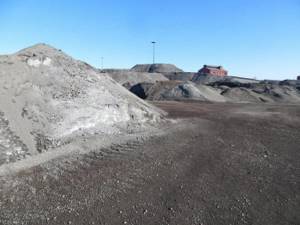
Before you finally decide on the choice of material for individual, residential or industrial construction, determine the advantages and disadvantages of this raw material, familiarize yourself in more detail with the properties and use of slag. If this fact does not matter to you, and only cheap material is your priority, then you can save money and purchase recyclable materials.
Granulation methods
You need to know that for the granulation of industrial waste, that is, slag, there are several methods, as well as devices that carry out this operation. Depending on the final moisture content of the slag, the installations are divided into types. There are installations for wet and also for semi-dry granulation.
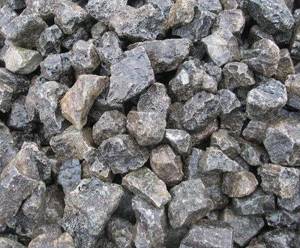
If the wet granulation method is used, then the slag, loaded into hot slag buckets, is fed to reinforced concrete basins filled with water. After this, it is drained from the buckets into these pools through special gutters. A small advantage of the method is that the pools are divided into several sections. This allows the cooling process to be carried out almost continuously. When the hot substance is poured into one section, already cooled blast furnace slag can be unloaded from the other at the same time. To ship raw materials, factories have grab cranes that feed them directly into open-type railway cars. After this, the slag is delivered either to the warehouse or directly to the consumer.
Granulated blast furnace slag
Blast furnace slag is granulated, i.e., converted into small particles when the molten slag is rapidly cooled with water or water and air. This gives them more activity and makes grinding easier.
Rapid cooling of the molten slag prevents or stops its crystallization, preserving in the slag that internal energy that would be released in the form of the heat of formation and crystallization of chemical compounds. This increases the ability of finely ground granulated slag to harden when mixed with water in the presence of hardening agents. For the production of slag cements, basic as well as acidic slags (with Mo>0.65) rich in alumina can be used. The so-called slag activity modulus, expressed by the ratio % Al2O3 : % SiO2, should be greater than 0.17 for basic slags, and greater than 0.33 for acidic slags.
In addition, depending on the type of slag, the MnO content should be no more than 2-5%, and sulfur S<3-6%. Requirements for the chemical composition of granulated slag are established by GOST.
Slag granulation methods
Two granulation methods are used - wet and semi-dry. With the wet method, slag from a blast furnace or slag ladle is poured in a thin stream into a pool or trench filled with water. Here it cools quickly and turns into small grains. The resulting granulated slag leaves the chute, or it is removed from the pool by a grab crane, an elevator and sent to slag cement factories. This method of slag granulation is simple, but has a major drawback: the slag is obtained with high humidity (15-40% moisture), it takes time to dry it Before grinding, a lot of fuel is wasted, unnecessary water contained in the slag is transported by rail, and in winter such slag freezes, which makes it very difficult to unload it from the cars.
Much better is the semi-dry granulation method, in which the molten slag from a chute is poured onto a rotating drum with blades. A limited amount of water is supplied to the gutter under a pressure of 4-5 ati; evaporating, it sharply cools the slag and turns it into a semi-solid, but still hot mass, which the drum blades crush and throw at a distance of 20 to 25 m; the slag particles cool in the air. This method was created by V.F. Krylov, S.N. Krasheninnikov and others. The slag is almost dry (humidity 2-10%), which radically improves the conditions for its transportation and drying and provides significant savings.
Generation and use of ash and slag waste
Let us consider in detail the process using the example of thermal power plants, where the raw material is crushed coal mixed with fuel oil. The choice is based on the fact that the main source generating ash and slag waste is thermal power plants. The combustion process is accompanied by the separation of microparticles of ash, which are carried away by the draft along with the smoke. At the same time, smoke and steam are formed by organic matter, while the mineral components of the burning fuel settle into slag and ash. The heavy ash residue that has not flown away settles on the flooding, fusing with each other, which leads to the formation of separate pieces. Next, the ash is mixed with slag, forming ash and slag waste, which is transported for storage in special dumps. At the same time, ash and slag are sorted separately from unburnt coal - particles of unburnt coal.
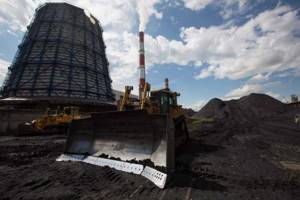
CHP waste – ash and slag waste
Processing of ash and slag waste is almost similar to the use of the slag itself. The scope of their implementation includes the production of:
- various types of concrete - heavy, cellular and silicate;
- construction compounds;
- cement clinker;
- expanded clay;
- ceramic brick.
Also, ash and slag waste is used when laying roadbeds for highways and insulating material at solid waste landfills.
Video about the problems of accumulation and disposal of ash and slag waste:
Major insulation manufacturers
One of the manufacturers of slag products is Trading House USK .
This company also sells insulation and delivers. The Aleksinsky expanded clay plant produces and sells slag, specializing mostly in the sale of expanded clay. Often coal and metallurgical companies are engaged in the sale of slag, since slag is a waste of production processes and the participation of these products.
Thus, slag insulation has many advantages . This is an inexpensive type of insulation that can be done with your own hands. The material is presented on the market, the purchase and delivery of slag insulation is established in many regions of the country.
Having high thermal conductivity, insulation with slag fillers reduces construction costs by reducing the base material when constructing walls. This affordable method of insulating rooms has proven itself over many years.

